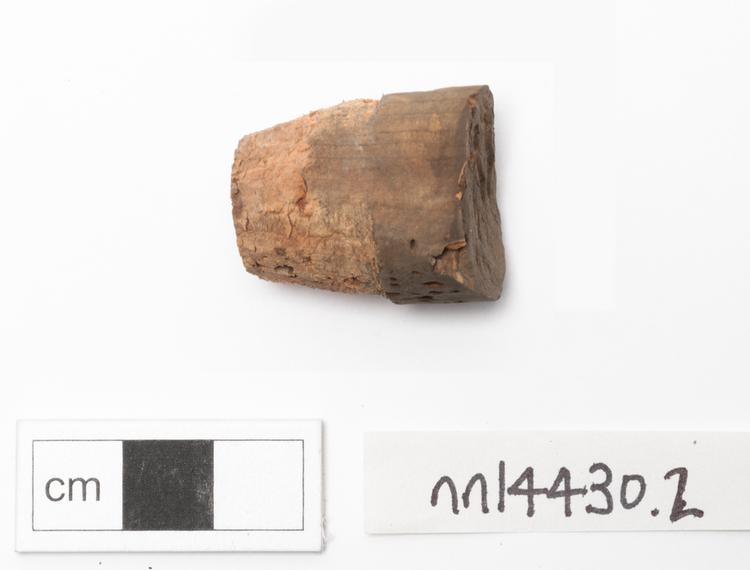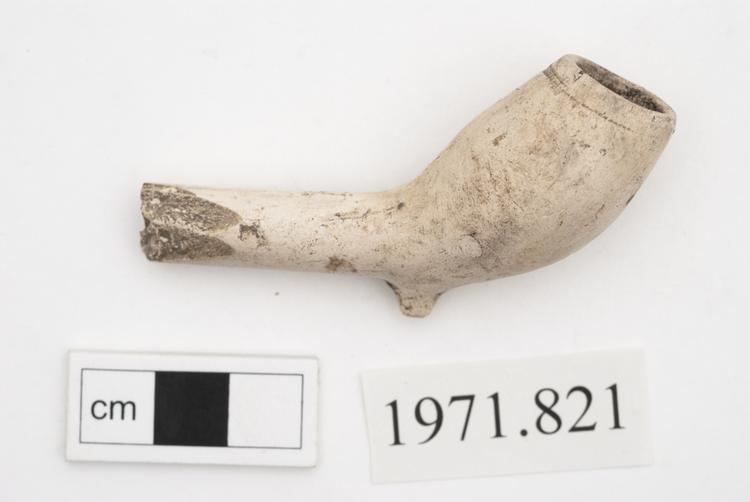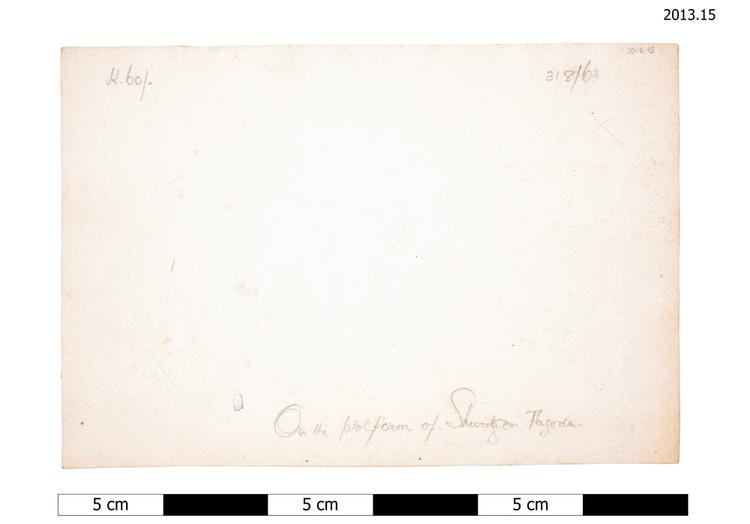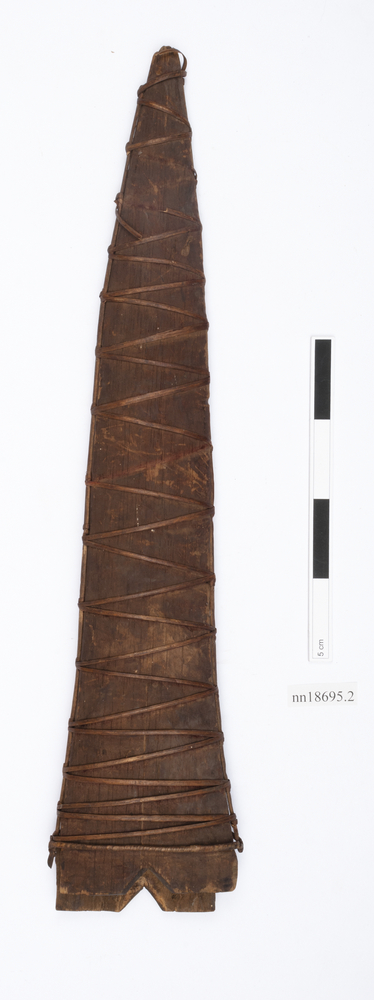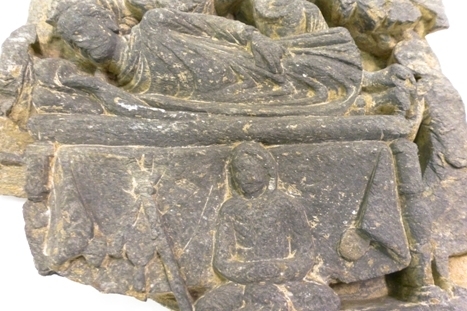
A slab of grey cloured stone, carved in relief depicting the death of Buddha, figure at the bottom of the bed touching his feet and another figure cross-legged beneath the bed. Possible figures also behind Buddha. Gandharan.
Fragment of a narrative scene depicting the Death of the Buddha, his Mahāparinirvāṇa. At the end of his life, at the age of about 80, the Buddha made his way to Kuśināra, now in Gorakhpur Division of Uttar Pradesh in modern India and in what is now Kushinagar District. There he took leave of his attendant monks, made his last conversion, of a person called Subhadra, and died (see Zwalf, 1985 and Zwalf, 1996). The Buddha was subsequently cremated, his relics divided into eight parts and distributed in due course to a set of claimants. In this badly broken piece, the Buddha is lying dressed in a pleated robe. His head (without halo), supported by his right hand, is on a pillow on a bed with turned legs, a classic Indian country bed or charpoy. He lies on a thin mattress overlying a piece of cloth draped over the bed and dangling nearly to the ground. Behind him are the usual series of grief-stricken attendants, at least one with upraised arms, now very abraded. At the foot of the bed to the right stands what may be a badly abraded worshipper with hands possibly in añjali mudrā (worship or respect mode), one hand rests on the Buddha’s feet. At the front of the bed there sits another figure, possibly the bodhisattva Vajrapāṇi. Below the whole is a narrow sculpted border depicting vegetation (although too heavily abraded to be certain). In the foreground next to the bed is a figure seated in padmasana (meditation posture) with his robe pulled over his head as a sort of cowl, next to a tripod made of three sticks secured by a rope, and suspending a sort of round bag, often thought to be a receptacle for water. The figure itself is often thought to depict Subhadra the Buddha’s last convert. This image is almost universal in depictions of the Buddha’s death at this period. This piece was probably part of a much larger, longer depiction of events in the life of the Buddha, and probably adorned a long flat space at the base of a stupa or similar part of a temple or shrine. The piece is flat and at the top left and bottom right are niches for clamps attaching the panel to its backing. There is no findspot or archaeological context known for this piece, and no apparent way of tracing this information beyond the fact that it is inscribed in black crayon with the number '6' or ‘9’. Other pieces in this collection are similarly inscribed in black with other numbers, forming a kind of sequence and so an indication of a relationship with each other (both in provenance and acquisition terms). Made from grey micaceous schist, the typical medium of almost all Gandharan sculpture of this period. 2nd or 3rd centuries in date.



